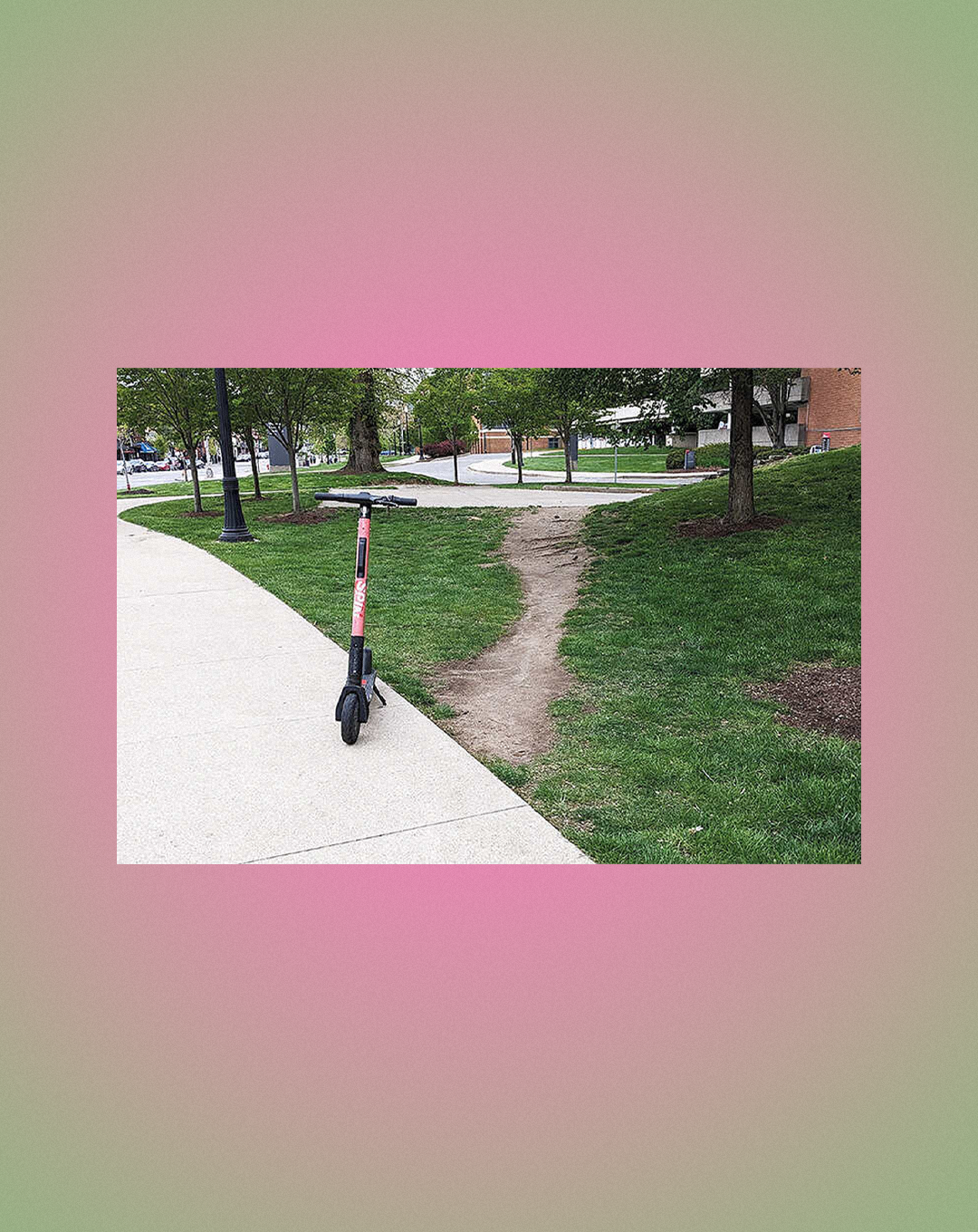Desire Paths, Digital Shortcuts and the Innate Human Desire to Self-Navigate
Words: Sihaam Naik
Make it stand out
In nature, a desire path is an unplanned trail created by human or animal traffic. These paths typically represent the shortest or most easily navigated route between an origin and destination. It's a simple concept that speaks volumes about human nature and our inherent desire for convenience and efficiency. Our ancestors carved the beginnings of a nebulous network of paths with a scythe and a will to divide - and we see the dredges of their judgement reflected in the satellite images of our urban planning decisions. But what happens when we translate this concept to the digital realm?
French scientist, philosopher, and poet Gaston Bachelard coined the term desire path in his 1958 book La Poétique de l’Espace (The Poetics of Space). He described them as paths "created by usage" that pedestrians have taken to get "from point A to point B more quickly than the predetermined paths (like sidewalks) that have been put in place."
I am of the opinion that taking a walk along a desire path means forging your own destiny. Whether you're evading the long way home by trudging through a mossy diagonal path or taking a scenic stroll, these choices affect the geography of urban planning itself. For example, I shave five precious minutes off my commute by racing through a grassy knoll rather than hitting the gravel of the main road. It’s not just convenience; it's the feeling of the soft marsh beneath my trainers that makes me feel like the main character in my own story rather than a product of my terrible time management skills. There I was, work bag slung across my shoulder, bagel in mouth, choosing the desired path, and I realised how often we forge desired paths in our online lives.
___STEADY_PAYWALL___
In the digital world, desire paths manifest in myriad ways. Whether it's curating a feed tailored to our likes, installing shortcuts to make our user interface cleaner, or delving into Wikipedia rabbit holes, we are constantly creating and following these paths. They are borne out of a human desire to take the scenic route, explore, and make things convenient, safe, and streamlined.
Desire paths in the digital realm can make online browsing fun and personal. Think about how we navigate social media platforms, bookmark our favourite posts, or use browser extensions to enhance our experience. These are our desire paths, crafted by our habits and preferences, making the online world uniquely ours. When we write and rewrite in our notes app or get lost in a web of hyperlinks, we're not just consuming content; we're creating a journey. Each click, each tap, is a step on our personalised desire path. Think of Pinterest boards where algorithms nudge you to your next prized inspo pic or Spotify playlists that unfurl based on one well-timed click. Is it deja vu, or has every click brought you closer to discovering what was always meant to be yours?
Like Ferdinand Magellan, I traverse digital realms, eager to find the path of least resistance to my next idea. Deviating from controlled routes designed by urban planning, property ownership, and traffic systems, they symbolise the self-made solutions carved out by communities, the wisdom of crowds, design, and creativity. As I make my way to an undiscovered land, I realise that these same principles bleed into out online habits.
“Is it deja vu, or has every click brought you closer to discovering what was always meant to be yours?”
They tell us something profound about the endless human desire to have a choice, not to have someone prescribe our path. Whether it’s blocking certain people from curating an ideal feed or accessing social media through burner accounts, bypassing algorithms seems to be second nature for some of us. Installing cheeky adblockers to go away with paying for subscriptions and installing shortcuts on our desktop to save that extra thirty seconds of browser loading screens, it’s clear that desire paths are about not following the script. There are rules about how spaces are used in a heavily constructed city or a meticulously designed digital platform. They represent a form of resistance, a testament to our agency and ability to write our stories. In essence, a desire path is no more than the trace of a decision — an impulse — to find a new way to join what we know with what we have yet to discover. They show us improvising the world, proving that the way ahead is not ordained.
In the digital landscape, we are all pedestrians, carving out paths based on our desires and needs. Whether through curated feeds, shortcut hacks, or spontaneous explorations, our online desire paths are a testament to our quest for convenience, efficiency, and personal agency.


